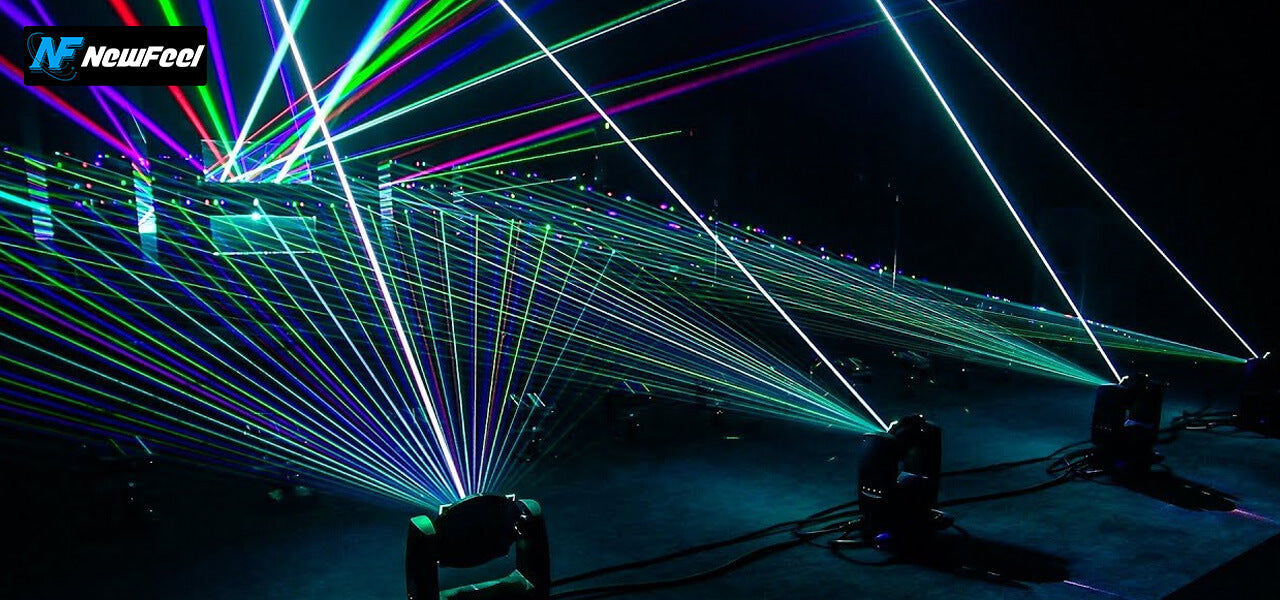What sources of uncertainty go into calculating the wavelength of the stage laser light?
by Newfeel Ho on Aug 17, 2022
What sources of uncertainty go into calculating the wavelength of the stage laser light?
What is the laser wavelength? Laser wavelength refers to the output wavelength
of the laser, which is an important parameter of the laser output laser beam.
The corresponding output frequency is called the laser frequency.
Anyone who has studied electronics knows the wavelength of radio, or more
professionally, the wavelength of electromagnetic waves. In fact, laser is
also a kind of electromagnetic wave, but the wavelength of laser is not in the
same order of magnitude as radio wave, it is many orders of magnitude shorter
than radio wave. The wavelength unit of laser is usually measured in nm
(1/1000000000 meter), and laser can be divided into two categories: visible
laser and invisible laser.

Under normal circumstances, the wavelength of visible light that the human eye
can clearly distinguish is basically between 400 nanometers and 700
nanometers. The shorter the wavelength of the laser, the bluer and more violet
its color is, down to ultraviolet rays invisible to the human eye. However,
the longer the wavelength, the more reddish its color becomes, all the way to
infrared, which is invisible to the human eye. The human eye is most sensitive
to green, orange and yellow light with wavelengths between 550-570 nanometers.
Therefore, in the visible light range, wavelength can be understood as a
numerical identification of color.
Laser visible beam color wavelengths from short to long are: blue-violet
(375nm, 405nm), blue (445nm, 488nm), green (520nm, 532nm), yellow (589nm,
577nm) and red (635nm, 650nm); Lasers in this wavelength range are often used
in stage performances and medical applications.

For stage performance lasers, the most commonly used
RGB lasers
are red light: 637nm 650nm, green light: 520nm, blue light: 445nm. NEWFEEL's
lasers have been committed to the research and development of laser technology
for more than 10 years. They not only produce
laser lights, but also develop and produce light sources that determine the effect of
laser lights. Currently, NEWFEEL produces and sells 445nm blue light sources,
637nm red light sources, and 520nm green light sources. Light source, as well
as other wavelengths of red light, blue light and color light source,
customers can customize the power according to their own needs, and choose the
corresponding color. Features of
NEWFEEL laser light
source:

1. The power and color of the laser can be customized
2. Small divergence angle, can project long distance without becoming thick,
good spot quality, small spot size, concentrated energy, brighter than the
same power laser
3. High power, for customers who pursue high power, we can provide single tube
up to 30W blue laser, 16W green laser, and 10W red laser
4. The modulation efficiency is high, and the modulation speed is as high as
100KHz, which means that the number of times of switching on and off at the
same time is 10 times more than that of ordinary lasers, allowing you to
project more complex images without reducing the brightness or smearing.
5. More precise processing technology and raw materials allow us to
manufacture lasers with smaller size and higher energy. Under the same power,
our laser volume is only 50% of that of conventional lasers.
6. The calorific value is small. Each product has undergone accurate
calculation and reasonable structural design, and through the high-speed
computing processor, the working current of the TEC can be changed in real
time, so that the machine can generate lower heat in the best working state.
7. The power supply is smaller and does not generate heat. Conventional laser
power supplies are amazingly hot. We use sophisticated digital circuits to
make the entire system hardly generate heat under high-load working
conditions.

Different colors of lasers have different sensitivity of the human eye, even
if the laser intensity is the same, the brightness felt by the human eye is
different.
Lasers of different colors have different abilities to pass through the
atmosphere, that is, the attenuation is different. Even if the laser intensity
is the same, the brightness felt by the human eye is different.

The environmental factors that affect the measurement accuracy of the laser
interferometer mainly refer to:
The air temperature, humidity, and atmospheric pressure in the current
measurement environment affect the wavelength of the laser light propagating
in the air.
Frequency and wave speed. Because wavelength = wave speed / frequency
The frequency is determined by the source of the wave, that is, when the wave
occurs.
The speed of a wave is determined by the medium, that is, when the wave
propagates.





